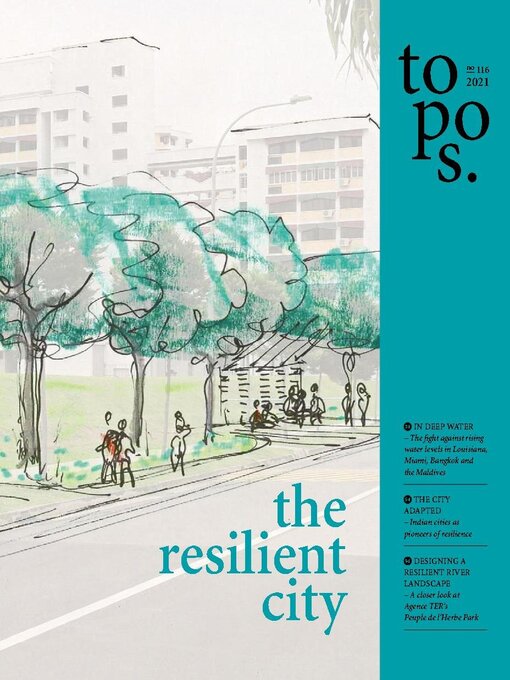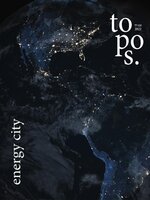Topos is a must-have for successful landscape architects, planners, urban designers and architects all over the world.The monothematic issues provide a global overview of innovative projects, new developments and trends in the profession. Be part of the worldwide community of Topos readers!
Editorial
Mexican Prototype by Tatiana Bilbao
“LET’S RENAME THE VENICE BIENNALE OF ARCHITECTURE” • The theme of this year’s Venice Biennale of Architecture is How Will We Live Together? The show includes exhibits about addressing the housing needs of the great mass of humanity as well as exhibits envisioning a more harmonious future with the flora and fauna we share the planet with. In the overall show, however, the exhibits demonstrate one thing above all: It is no longer just about architecture, but interdisciplinarity.
Lisa Switkin
James Corner
HAMBURG • Hamburg – situated where the River Elbe branches out, it has an amphibious urban landscape: located on the water’s edge and infiltrated by waterways. Hydraulic engineering has been the foundation Hamburg’s development and design, the very DNA of the city’s planning. Yet Hamburg’s amphibious character has increasingly had to make way for a more land-based concept of city planning. Current initiatives are working to reinvent water as a flowing free space.
The Most Resilient Airport on Earth? • Maybe. A photoseries.
Resilience: Time is of the Essence • Planners aim at making cities and their populations resilient against sudden occurrences of stress, such as environmental disaster. Adaptive planning measures serve to achieve this aim, not only in the realm of resilience, but in the arena of sustainability as well. Yet resilience and sustainability are different in terms of the scales of time and space they refer to. How to delineate these differences and how to reconcile them to support effective adaptation measures? While processes of climate change increasingly fuel more frequent and intense environmental disasters, time is of the essence.
In Deep Water • Cities near the sea, in delta regions and along rivers are fighting their very own battle against climate change. They are particularly affected by rising water levels. As a result of the massive pressure to act, comprehensive infrastructure projects such as artificial islands or entire resettlement programmes are being initiated – especially in Asia and the USA. They are intended to protect the population from the rising water masses. However, not all approaches are equally sustainable or socially just. The following discussion presents four examples of controversial projects in Louisiana, Miami, Bangkok and the Maldives.
Resilience through Social Innovation • Venice, Dubrovnik, Barcelona – cruiseship destinations like these find themselves in an ongoing conflict of interests between residents, visitors, the location’s architecture and environmental degradation. The very diversity of these challenges frequently makes them appear unsolvable. The city of Genoa is different. The seaport has developed strategies for resilience to overtourism that include strengthening the ties between residents and visitors.
The “Artery of Hope” • The city of Alexandria is struggeling with growing pains. In its search for solutions, the Egyptian government has embarked on several grand projects to solve severe urban problems by transforming an important part of its once most valuable blue infrastructure. The most challenging of these is the “Artery of Hope” project, involving a 21-kilometer section of the Mahmoudieh Canal being filled in for the construction of a motorway, intended to resolve local traffic problems and support infrastructure for new residential facilities. Sara Fouad, Egyptian guest researcher at the chair of professor Udo Weilacher at the TU Munich, reviews the project and explains why...

 N. 130
N. 130
 N. 129
N. 129
 N. 128
N. 128
 N. 127
N. 127
 N. 126
N. 126
 N. 125
N. 125
 N. 124
N. 124
 N. 123
N. 123
 N. 122
N. 122
 N. 121
N. 121
 N. 120
N. 120
 N. 119
N. 119
 N. 118
N. 118
 N. 117
N. 117